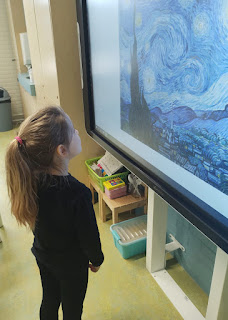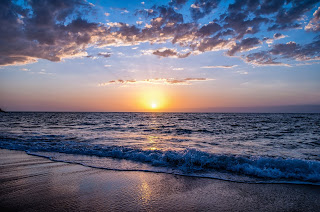You need per student:
- 1 sheet white drawing paper
- 1 sheet colored construction paper
- 1 sheet colored construction paper from which you cut 7 cm
- 1 sheet blue construction paper
- leftovers of colored paper
- glue
- scissors
- black marker
Who is Matisse?
Matisse (1869 –1954) was a French artist, known for both his use of colour and his fluid and original draughtsmanship. He was primarily known as a painter.
Matisse didn't care if stones were blue, he just chose the colors he liked. Some people thought is art was very ugly: someone who paints blue faces and green noses is a fool and Matisse was called 'Fauve', which means: wild. This is how the word Fauvism came into being for this art movement, art with bold colors.
After a surgery Matisse spent the rest of his life in a wheelchair. He wasn't able to paint anymore, but could still paint with his scissors.
View various artworks of Matisse.
Then few the artwork Oasis. What stands out?
- no straigh lines
- organic shapes
- bright colors
- What is an oasis and why is this artwork called so?



















































